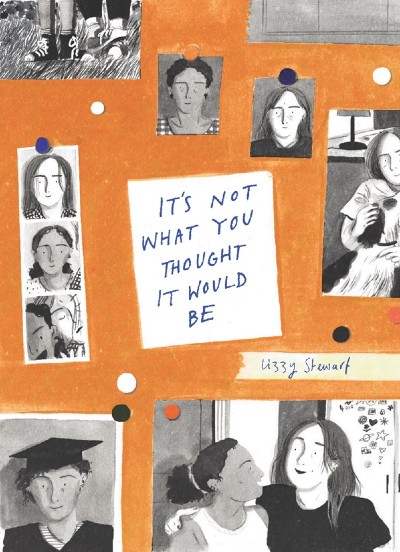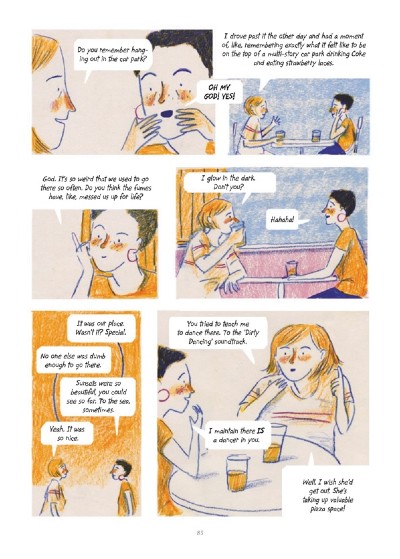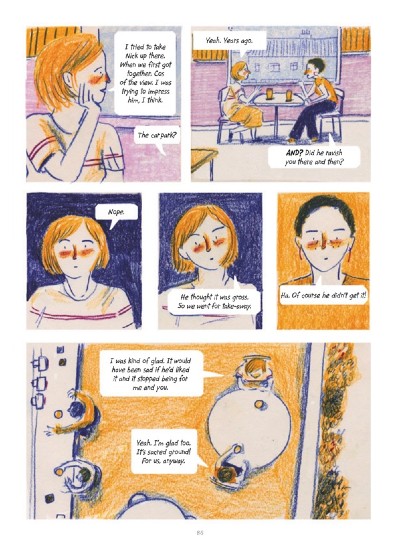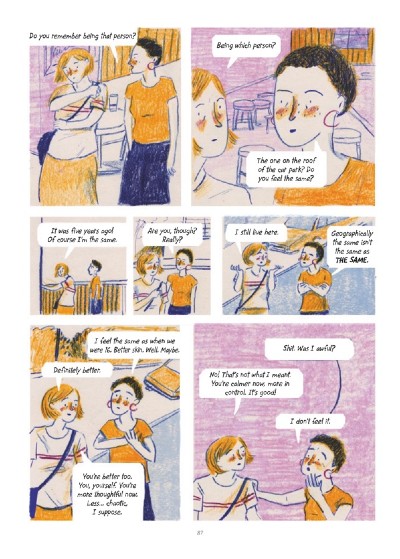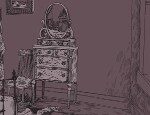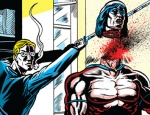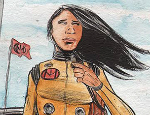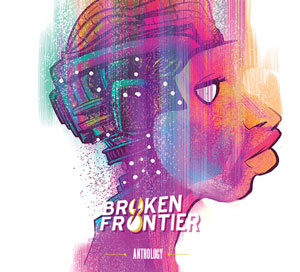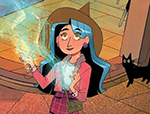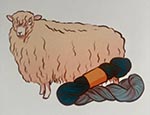In It’s Not What You Thought It Would Be, Lizzy Stewart shows us in her gentle, raw way, how beautiful and foolish we look, trying to live our lives with any sort of continuity in this world.
“What they don’t tell you about the end of the world, the lunatics and the scientists, is that it happens every day. The world from before is gone and there is a new world and it is completely different.”
Lizzy Stewart is kind of a big deal. Over the last decade, she’s quietly gone from strength to strength in multiple strands of a career that includes three best-selling picture books, Juniper Jupiter, The Way to Treasure Island and the Waterstones Children’s Book Award-winning There’s A Tiger in the Garden written herself, and in numerous collaborations with authors. She’s been a stalwart of the London small press scene, appearing in iconic anthologies such as Tiny Pencil and Comic Book Slumber Party’s Greasy’s Guide to Nookie, and she was also nominated for the emerging talent category in the 2013 British Comic Awards. More recently, Hannah and Alys at the End of the World was a standout release at ELCAF in 2019, and later that year Lizzy’s transcendent and multi-modal visual essay Walking Distance came out from Avery Hill.
It’s Not What You Thought It Would Be is a new collection of her shorter work from Fantagraphics, and brings together some stories you may have seen before (such as this one and this one). Some parts stand alone, while others connect, but all in their way examine what it is to live in this world in the tender overlapping of our past and future selves. It feels more real than it looks, like a memory trying so hard to be remembered. Stewart’s work is grounded in a tactile and playful methodology, embracing the hand-made approach from watercolour, the coloured pencil, and pen and ink. There are several different approaches to colour and medium here, but all sing with the same sense of style, with fluid brushwork and sparse but precise lines. Like a Russian doll, Stewart’s incarnations of her characters contain iterations of their past selves, building on and questioning their pasts, and gently obliterating their old realities. I hope she continues this practice into her later years, adding more layers to her already layered outlook.
The identity of some of these characters blurs, and I wasn’t always sure when the work was autobiographical, and when it wasn’t. The pieces are organised roughly in order of the increasing age of the protagonists, so that although the perspective and art style shifts, there’s a sense of growth throughout. We revisit one pair of characters three times in quite different visual representations (Stewart was careful to add in enough clear references to ensure that we can tell for sure that yes these are the same characters – where the same is less clear elsewhere in the book), and these stories in particular tie the whole together. More so than the titular story following a different (or partially different?) group of “young-ish” women living in the city, although that’s also excellent. In ‘Dog Walk’, ‘A Quick Catch-Up’ and ‘The Wedding Guests’, a pair of best friends drift apart and come back together again, in heart-wrenchingly relatable and understated dialogue of spoken and unspoken truths. When as teens they laugh about going “ever so slightly off the rails”, it’s like a call to mediocre arms – reminding us that it’s not only the popular kids, or people living in interesting times, that have deep feelings. Stewart’s work evokes so well the aching loss of growing up, and questioning whether we ever really shed the skin of our awkward teenage selves.
We are often drawn, these days, towards an examination of feelings of belonging, and not belonging, through identity politics. Much of Stewart’s work centres the experience of women. But although the perspective is both feminine and feminist, it is memory, friendship, and sense of place that are really under the microscope here. The straight, white perspective reaching outward through highlighting commonality – while the faces come in reliably varied colours, this goes unmentioned and it’s a concretely British experience they are all having. And it is so good at evoking some of those very British experiences, from foxes roaming post-war council estates, to underage visits to grubby pubs, and questioning the pros and cons of moving to London. Being at school can feel so very much like being scrutinised and found wanting, outside and adjacent to other questions of identity labels. Although by the end, all Stewart’s characters have left school far behind, I like how It’s Not What You Thought It Would Be never lets them quite peel off their costumes of teenage awkwardness entirely. It’s a worthwhile celebration of the quiet moments of solidarity that we give each other to get through the mundane hell of adolescence, and how they build us the perspective we need to get through the mundane hell of adulthood.
Lizzy Stewart • Fantagraphics Books, $24.99/£21.99
Buy It’s Not What You Thought It Would Be online here in a bookplate edition from Gosh! Comics
Review by Jenny Robins





